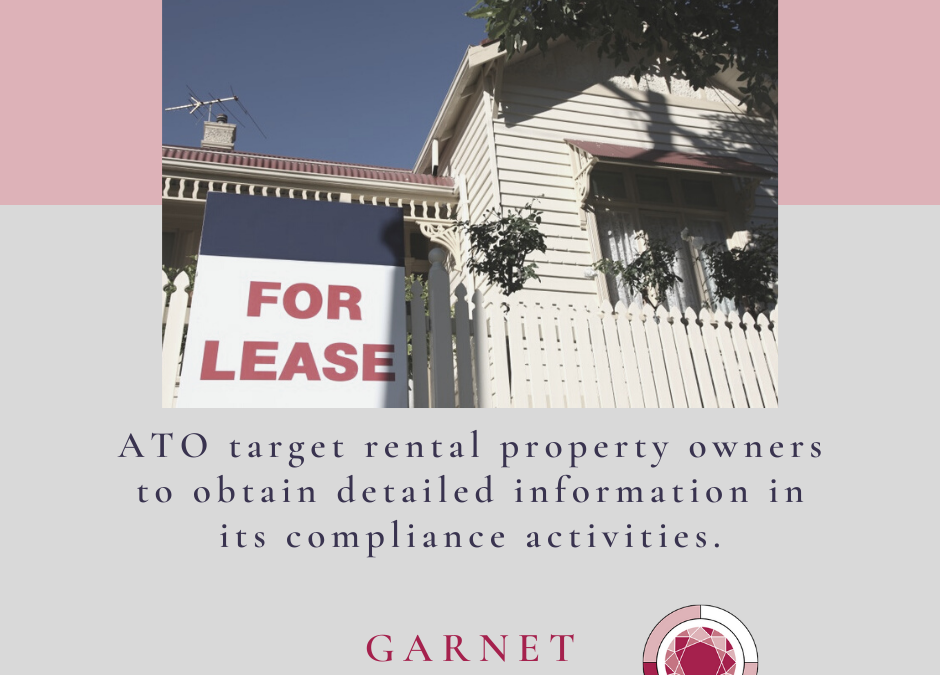Rental property owners beware, the ATO has commenced 2 data-matching programs designed to obtain a myriad of information to ensure that various income tax reporting obligations have been met.
Specifically, the ATO will run a new data-matching program to collect property management data for the 2018-19 to 2022-23 financial years and extend the existing rental bond data-matching program through to 30 June 2023.
The justification used by the ATO for targeting rental property owners is that each year it conducts a review of a random sample of tax returns to calculate the difference between the tax collected and tax that should’ve been collected (ie the tax gap), for the 2017-18 year, it estimated a net tax gap of 5.6% or $8.3bn for individuals with rentals making up 18% of this net tax gap. As a comparison, the net tax gap for high wealth groups is 7.4%, for medium businesses it is 6.2% and for medium businesses it is 11.5%.
The information obtained under the 2 programs will include property owner identification details, including unique ID, individual/non-individual names, addresses (residential and postal), email addresses, contact numbers, BSB number, bank account number, bank account name, and business contact names and ABN if applicable.
Rental property details obtained under the 2 programs will include address, date property first available for rent, period of lease, commencement and expiration of lease, amount of rental bond held, number of weeks the rental bond is for, amount of rent payable for each period, period of rental payments (ie weekly, fortnightly, or monthly), type of dwelling, number of bedrooms, rental income category, rental income amount, rental expense category, rental expense amount, and net rent amount. In addition to the above, the programs will also obtain details of the property managers involved, including business name, managing agent full name, business addresses (including internet addresses), email, contact numbers, ABN and licence number.
As can be seen, the amount of information to be collected by the ATO is voluminous and detailed which will enable it to perform detailed analytics for its compliance programs.
The rental bond data will be acquired from State and Territory rental bond regulators on a bi-annual basis, and the property management data will be acquired from property management software providers. It is expected that records relating to around 1.6m individuals will be obtained each financial year in relation to the property management program and records of an estimated 350,000 individuals will be obtained under the rental bond program. Although, due to the nature of the data collected, there will be some overlap in the number of individuals captured.
The ATO will be using the vast amount of data collected to ensure that taxpayers that own income producing property are meeting their obligations to report the correct amount of income in their tax returns.
It will also be used to identify taxpayers disposing of income producing properties that will trigger a CGT event, the ATO notes that it will use historical rental bond data to support CGT cost base calculations if necessary.

Nadine Rawlings Garnet Business Solutions
Want to discuss your personal situation, I’d be more than happy to assist.
Simply click the Booking button below or email me directly to start the conversation.
Email – nadine@garnetaccounting.com.au
Interested in reading our other articles then head over to and choose something that interests you at https://www.garnetaccounting.com.au/articles/
𝐖𝐡𝐚𝐭 𝐚𝐫𝐞 𝐜𝐚𝐩𝐢𝐭𝐚𝐥 𝐰𝐨𝐫𝐤𝐬 𝐝𝐞𝐝𝐮𝐜𝐭𝐢𝐨𝐧𝐬?
Understanding tax depreciation lingo can sometimes be confusing.
But as an investor, it’s important that you have a good understanding of the depreciation deductions you can claim to ensure you’re getting the most out of your investment property.
Our recent article goes into more details and there’s even a link to our Depreciation Calculator. Try it to see what deductions you might be able to claim for.
https://www.garnetaccounting.com.au/capital-works-deductions-explained/

